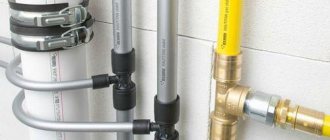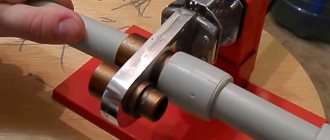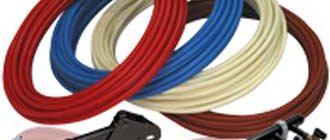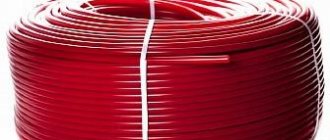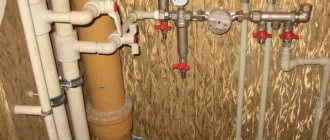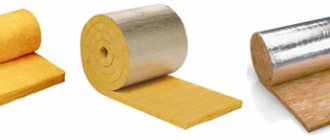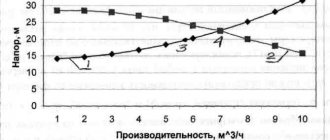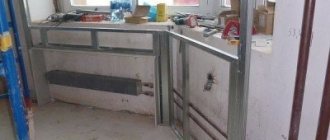Communications even in the most modern apartment will need improvement over time. Cross-linked polyethylene for heating provides this opportunity. This material allows you not only to update the wiring of water supply or heating system pipes, but also to install heated floors.
What is cross-linked polyethylene
This is a type of plastic. A special feature of the material is that a special stitching technology is used in its production. The flow of electrons acts on large polyethylene molecules and allows them to connect their free branches. The result is strong lateral bonds characteristic of harder materials. The final product is called PE-X, where PE is an abbreviation for polyethylene and “X” is a cross-linking symbol. This is where the material got its name.
XLPE pipes for heating are widely popular due to their affordable price. Do not confuse them with other polyethylene products. There is also a polypropylene analogue on the market, which, although it is plastic, has significant differences.
Device
In the simplest version, such pipes have three layers. The external one protects against the access of oxygen, which is an oxidizing agent. Upon contact with it, polyethylene loses its qualities and quickly ages. The middle layer is adhesive, and the inner layer is polyethylene. You can also find five-layer pipes, which have one more adhesive and polyethylene layer on top of the three regular ones.
Specifications
The material has an increased degree of strength, resistance to chemicals, and hydraulic properties. Environmental friendliness allows its use in drinking water supply systems.
Depending on the device and manufacturing method, pipes may have the following parameters:
- diameter from 10 to 63 mm;
- weight per linear meter from 0.1 to 0.15 kg;
- nominal pressure from 8 to 25 bar;
- operating temperature up to 95 ºС;
- maximum cross-linking density - up to 85%.
Size and diameter
The production of polyethylene pipes is quite expensive, so large-diameter products cannot compete with metal-plastic and metal pipes. The most common are pipes with a diameter of 16-32 mm.
Pipe sizes and areas of application:
- Smaller products with a diameter of 16 x 2.2 mm are used for supplying water and organizing heated floors in ordinary apartments and small private houses. The first number means the outer diameter, the second - the wall thickness.
- Medium-sized pipes are used for water supply and heating in cottages. Their sizes range from 20 x 2.8 mm to 32 x 4.4 mm.
- Products with diameters from 40 x 5.5 mm to 63 x 8.6 mm are used for the installation of risers and elements with which the heating system is equipped. Sold in bays from 50 to 200 meters.
Application area
The combination of characteristics allows the use of polyethylene pipes when installing utility water supply and heating networks for a residential building, including radial ones, including heated floors. Moreover, in each individual case different diameters and standard sizes are used, which allows saving on material. The choice is influenced by parameters such as coolant temperature and the required pressure in the system.
Advantages
As often happens, the qualities of the new material were initially underestimated by its developer.
Advantages of cross-linked polyethylene:
- Service life - up to 50 years.
- Maintains performance at temperatures from 0 to 95 ºС. Able to withstand from -50 to +120 ºС for a short time.
- Resistant to corrosion.
- Withstands high pressure - up to 25 bar (24.7 atmospheres).
- It is resistant to aggressive chemicals, which allows you to get rid of blockages in everyday life using household chemicals.
- It has low adhesion, due to which growths on the walls are practically not formed.
- Elastic and flexible. In case of a jam, it quickly restores the original parameters. If necessary, it easily takes rounded shapes.
- Absorbs noise.
- Has little weight.
The list shows the maximum positive values. Depending on the purpose, certain types of material may have a smaller set of positive parameters. For example, pipes for cold water supply have reduced thermal characteristics. Along the entire length of the products, information about the characteristics of the material is indicated, which allows you to ensure that the choice is correct when purchasing.
Flaws
For high-quality installation, you need to know about some of the nuances of this material, which can be called disadvantages. This allows them to be leveled and thereby extend the service life of the system.
Material Features:
- It allows oxygen to pass through, which leads to corrosion of the metal elements of the system; the connection at the fitting attachment points is especially sensitive.
- Afraid of ultraviolet radiation. Open areas must be hidden from sunlight.
- Large diameter products are not produced. For sewer installation, another plastic material is used, for example, polypropylene.
- It is covered with a rather fragile protective layer, there is a high risk of damage, for example, during transportation.
Stitching methods
For the manufacture of pipes, a material made by one of four stitching methods is used.
Types of products:
- PEX-a (peroxide);
- PEX-b (silane);
- PEX-c (electron beam);
- PEX-d (nitrogen).
The last two types have not found widespread use due to lower performance qualities and more complex production methods.
During peroxide cross-linking, the raw material is heated, and peroxides (substances that are activated at elevated temperatures and promote the connection of active molecules) are added to it. This method allows you to obtain the best flexibility of the material, as well as the ability to correct creases by simply heating it with a hair dryer. This is the most expensive production method, but the density of molecular bonds is also the highest.
Silane is produced in two stages: first, hydrogen silicas (silanes) are added to the raw material, and then it is hydrated, that is, a chemical reaction that leads to the combination of hydrogen molecules with organic matter. In this case, the addition occurs to a double or triple bond. The connection density of such a material is lower, but the bond strength between molecules is higher. The production of such pipes is cheaper, and the material itself is less flexible.
Prices for PEX pipes
PEX pipes
System assembly
When assembling a heated floor system, the pipe can be laid in a spiral or in the form of a double or single snake. A simplified method is considered to be a snake, but this installation ensures uneven heating of the surface. The gaps between the contour lines should not be more than 35 cm. But you need to understand that the distance between the pipes of a warm water floor may differ in each individual case. The pipe for the system has an acceptable length of no more than 120 meters. The average pipe size for installation should be about 60 m. Otherwise, high heat losses may occur and the water will return at a lower temperature.
Before laying the pipe, it is necessary to lay a layer of thermal insulation material. To do this, you can use polystyrene foam, polystyrene foam or a reflector based on foamed polyethylene. It is recommended to fasten the thermal insulation using special clips or driven dowels. Some insulation models have a special profile for attaching the pipe and markings.
In the process of pouring a concrete screed, we must not forget about expansion joints, which prevent deformation due to linear expansion of the products.
The system is put into operation after the concrete screed becomes completely solid. In this case, you cannot sharply increase the temperature of the coolant; it is best to increase it by 3-50C daily.
If cross-linked polyethylene has external anti-diffusion protection, assembly of the system should begin only if there is no damage to the surface of the pipe.
Reinforced cross-linked polyethylene
The pipes are reinforced with aluminum foil. In the same way, you can strengthen products made from other plastics, which are collectively called metal-plastic, precisely because of this layer.
Reinforced pipeline has the following advantages:
- Increased strength, ability to withstand high temperature and mechanical loads.
- Light weight, which simplifies its installation.
- Non-corrosive. The aluminum layer protects the polyethylene layer from exposure to oxygen, which can negatively affect its structure.
Disadvantages of products
Naturally, despite the pronounced advantages of this universal material, it also has some disadvantages. For example, polyethylene pipes react extremely negatively to exposure to ultraviolet radiation, under which they become more fragile. In addition, the action of oxygen molecules inside the molecular lattice has a very unfavorable effect on them.
These problems are not critical for polyethylene products with a modified cross-linked molecular structure. They can be solved or eliminated completely with careful delivery and operation in compliance with all technical standards . Special protective substances can be introduced at the production stage, which will make life even easier for the owners of apartments and houses.
Review of manufacturers and costs
In markets and construction stores you can buy products from different manufacturers, focusing on both cost and brand. Many brands have become synonymous with excellent quality. It’s good when you have to choose from two or more good materials.
Rehau
Rehau (Germany) is one of the popular brands. Like any manufacturer who cares about the consumer, this company produces not only pipes of different diameters (from 16 to 63 mm), but also fittings. The company is also a developer of innovative joining techniques. When purchasing pipes of a certain brand, it is advisable to use fittings of the same brand.
To protect products from oxygen, an outer layer of EVAL (ethylene vinyl alcohol) is used. Combining materials can lead to some confusion, since the inner layer can be made of polyethylene, the middle one can be reinforcing, which gives the pipe the status of metal-plastic, and the outer one can be a metal-polymer. For convenience, information about the composition is applied to the pipes and marked PEX or PE-X, indicating that the main layer is made of cross-linked polyethylene.
For user convenience, the pipes are painted in different colors:
- red – for underfloor heating;
- blue – for cold water supply;
- white - for hot.
Often, not the entire pipe is painted, but a strip of the appropriate color is applied along its entire length. Rehau products are the most expensive, but also of higher quality. The service life of the products declared by the manufacturer is 50 years.
Uponor
Uponor (Germany) is also a top brand. Pipes of this brand have increased strength, flexibility and durability (service life - up to 50 years). Most experts believe that the quality of Ononor heating pipes made of cross-linked polyethylene is no worse than Rehau products.
Most disputes arise over the ease of work, since the installation principle is very different and requires a different set of tools. The price can greatly depend on the region, in some it is almost the same, in others Ononor can be 20-25% cheaper.
Bir Pex
If we focus on service life, then the products of Bir Pex (Russia) are in no way inferior to their German counterparts. The difference is the lower price, which is not only due to the fact that the production is local. In production, only types PE-Xb and PE-RT (made of polyethylene with increased heat resistance) are used.
The company's assortment also includes a huge number of fittings, installation tools, and shut-off valves. When furnishing a small apartment, the difference in cost may seem insignificant, but for large objects it is quite noticeable.
Valtek
The Valtec company (Italy) also produces pipes only of the PE-Xb type, which allows it to present products on the market that are quite affordable in terms of price.
The product range includes metal-plastic (metal-polymer pipes) PEX-AL-PEX, suitable for radiator heating. Under passport conditions of use, the service life is 50 years. The warranty on metal plastic is 10 years.
Sanext
The main products of SANEXT (Russia) are PE-Xa pipelines. In addition to pipes, fittings and tools, the product range includes: heat meters, distribution manifolds, balancing fittings, thermostatic fittings and much more.
The warranty on pipes and fittings is 10 years. Despite its local location, the company has a small number of representative offices, just over a dozen.
Nuances and installation methods
Manufacturers often use mutually exclusive fastening and installation methods. Each set of pipes requires its own fitting and working tool for installation work. The good news is that no welding equipment is required.
Using a compression fitting
A compression fitting is often called serviceable, due to the fact that it is dismountable. At any time it can be removed, replaced with any of the gaskets and used again.
The compression fitting consists of:
- couplings or fitting bodies;
- crimp (sleeve) nut with a cone inside;
- collet ring;
- gaskets (Teflon washer);
- sealing rings (2 pcs.).
To install a compression fitting, you only need two adjustable wrenches from the tools, and if the diameter is small, regular wrenches may be suitable.
As a rule, connections are sold assembled; if for some reason a disassembled one is available, it is first assembled: a gasket and O-rings are put on. If the pipe core contains aluminum, the gasket breaks the contact between the aluminum and the brass of the fitting. O-rings serve to ensure tight contact between the fitting and the polyethylene; they are put on in such a way that there is a gap between them.
The installation process is quite simple:
- A crimp nut and ring are placed on the pipe.
- The pipe is pushed all the way onto the fitting with O-rings.
- The nut is tightened (screwed to the coupling).
- The ferrule inside the nut is compressed, thereby pushing the polyethylene close to the fitting.
Systems installed in this manner require periodic technical inspection. If necessary, the nut is tightened.
Using a press-on fitting (similar to the previous subparagraph)
Such a fitting, on the contrary, is called maintenance-free. This type of installation assumes that the sleeve is pressed close to the polyethylene and removing it is quite problematic. That is, after installation, the fitting becomes non-separable and will require complete replacement in the future.
You can only remove the press-on sleeve from polymer pipes using a grinder, that is, cut it, thereby rendering it unusable. In this case, you will only have to buy an additional sleeve, however, if we are talking about one connection, the savings will be negligible.
To use this type of installation, special equipment is required. If the work involves a one-time nature, it would be more logical to rent it.
The process is also simple:
- The pressing sleeve is placed on the pipe.
- The end of the pipe is expanded with a special device in order to fit the size of the fitting.
- The pipe is put on the fitting.
- The sleeve is pressed onto the fitting. In simple words, the sleeve is pulled under pressure onto the section of the pipe that is put on the fitting.
Thus, the metal parts tightly compress the polyethylene without allowing any gaps.
At the moment, such a fitting is cheaper than a compression fitting, but its installation requires a special tool. Both options are considered reliable, which does not exclude the need for periodic monitoring.
This video shows the installation of a press-on fitting.
Electric welding method (step by step list)
There is a third installation method - electric welding. It does not require a welding machine in the usual sense, but it will require a machine for electrofusion welding.
In terms of labor costs, this method is even simpler: pipes are inserted into the apparatus and welded. The problem is that such equipment may not be able to be rented, and even if it is possible, certain skills in working with it are required.
There are three welding methods:
- Electrofusion. The pipes are inserted into a special coupling into which metal threads are woven. They are heated by electricity, the coupling melts and seals the connection.
- Butt welding method. The ends of the pipes are heated to the melting temperature and pressed against each other under pressure.
- Bell-shaped A coupling is also used, the sides of the mating surfaces are heated and pressed, then they are allowed to cool.
Leak test
After completing the work, it is necessary to check the connections for strength. It is assumed that water is supplied to the system at a pressure exceeding the operating pressure by one and a half times. Testing is carried out for at least half an hour, during which time no leaks or decrease in pressure should be recorded.
It is possible to carry out the test using inert gases and compressed air. Such pressure testing is carried out at unheated facilities, in systems that are not actually filled with drinking water, in pipelines where there is no provision for draining water. This method can be considered more industrial.
Each installation method has its supporters, but a preventive inspection is necessary for any of them. The recommended period and frequency of inspections is at least once a year. Some experts advise doing this as often as possible, especially in cases where there is suspicion of a leak.
Which is better - polyethylene or metal-plastic?
Cross-linked polyethylene can also be considered metal-plastic if one of its layers is aluminum foil, which performs two functions. The main one is reinforcement, that is, an increase in strength. Also, this layer prevents polyethylene from coming into contact with oxygen, which does not have the best effect on it.
When choosing a material, you should be guided by practical considerations that do not oppose polyethylene and metal-plastic, but call for the use of one or another material in accordance with its purpose.
In order to understand the purpose, it is worth paying attention to the features of both options.
Metal-plastic:
- susceptible to delamination, temperature changes are undesirable for it;
- not elastic, water frozen inside can tear it;
- prone to creases.
Based on this, it is not advisable to use metal-plastic pipes, for example, when installing a heated floor or a garden irrigation system that is not dismantled for the winter. Often used for radiator heating.
Polyethylene:
- less tensile strength;
- afraid of direct sunlight;
- elastic, can expand and return to its original shape;
- withstands temperatures up to 95 degrees Celsius.
It is not advisable to use the products in closed systems. This can lead, for example, to the layer of plaster laid on top beginning to crack. At the same time, such material is recommended for the installation of heated floors, use in hot water supply and heating systems.
Thus, this or that material is able to demonstrate its best qualities under appropriate conditions. It would be correct to use both options if it is technologically and practically justified. Find out how to make a brick oven for your dacha yourself using the link.
Conclusion
Now you know what PE-X is, what products it is used for, and what qualities they have. Additionally, watch the video in this article. And if you have any questions that you haven’t found an answer to, ask them in the comments, and I will explain all the points you don’t understand.
Did you like the article? Subscribe to our Yandex.Zen channel
September 4, 2021
Types of pipes, Pipes
If you want to express gratitude, add a clarification or objection, or ask the author something, add a comment or say thank you!
